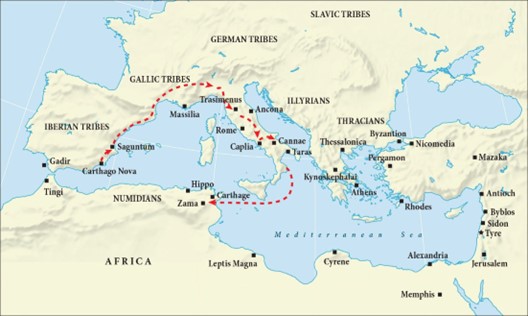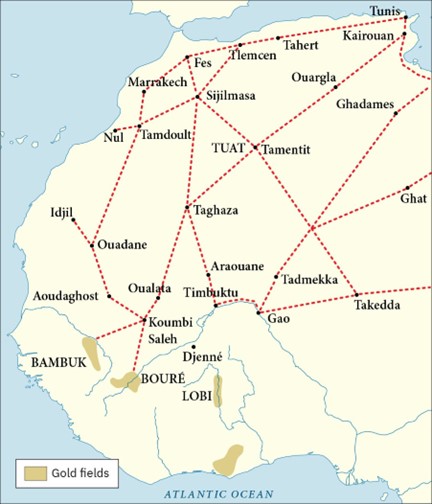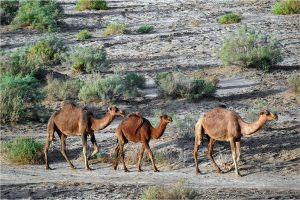8 North Africa’s Mediterranean and Trans-Saharan Connections
The history of North Africa is a rich tapestry of diverse cultures, empires, and trade networks that spanned the Mediterranean and Sahara Desert. From the ancient Phoenicians and Romans to the medieval Islamic caliphates and modern-day nations, North Africa has been a hub of connectivity, exchange, and cultural fusion.
North Africa
The Phoenicians founded trading posts and colonies along the Mediterranean coast, creating a loop of interconnected settlements that stretched from Byblos in the east to Gadir (Cadiz) in the west and Libdah (Leptis Magna) in the south. In 814 BCE, they established Carthage, which would become a dominant power in the western Mediterranean under the leadership of legendary founders such as Dido (c. 814-760 BCE).
Carthage’s government evolved from a monarchy to a republic, praised by the Greek philosopher Aristotle for its balance of power. However, Carthage’s dominance was challenged by the rise of Rome, leading to the Punic Wars (264-146 BCE). In the Second Punic War, the famous Carthaginian general Hannibal Barca invaded Italy with tens of thousands of soldiers and dozens of war elephants, which played a crucial role in his military campaigns. The elephants, sourced from the Atlas Mountains and trained in Carthage, allowed Hannibal to cross the Alps and defeat the Romans at the Battle of Cannae in 216 BCE. Ultimately, however, Carthage was defeated at the Battle of Zama in 202 BCE by the Roman general Publius Cornelius Scipio Africanus.

The absorption of North Africa into the Roman Empire had a profound impact on the indigenous peoples of the region. The empire’s need for resources led to the development of large-scale agriculture, individual land ownership, and seasonal migrations of nomads. The Roman general Publius Cornelius Scipio Africanus played a key role in the defeat of Carthage and the establishment of Roman rule in North Africa.
In eastern North Africa, the city of Alexandria was founded in 332 BCE by Alexander the Great. After Alexander’s death, his general Ptolemy I Soter (367-283 BCE) seized control of Egypt and established a dynasty that ruled for three centuries. The Ptolemies styled themselves as pharaohs to demonstrate continuity with the past and built temples, declared themselves gods, and carried out religious duties to maintain their power. The Ptolemaic period saw the rise of the Museon or Museum of Alexandria, a center of Greek culture, learning, and religion. The museum housed the famous Library of Alexandria, which contained over 700,000 scrolls representing all the knowledge of the known world.
One of the most famous Ptolemies was Cleopatra VII (69 BCE-30 BCE), who ruled Egypt from 51 BCE until her death. She was a skilled diplomat and strategist who sought to maintain Egypt’s independence in the face of Roman expansion. She formed alliances with powerful Roman leaders, including Julius Caesar (100-44 BCE) and Mark Antony (83-30 BCE), but ultimately, Egypt fell to the Romans after her death.
Link to Learning
The tradition of interpreting and depicting Cleopatra (https://openstax.org/l/77Cleopatra) is presented in this article.
The Roman conquest of Egypt added another layer of complexity to the already diverse societies of North Africa. While the Roman language became the language of government, the majority of the population continued to live in rural areas, laboring to produce the resources that supplied the imperial capital. The Roman administration remained constant until the fourth and fifth centuries CE, when it faced challenges from invading groups such as the Vandals, led by Genseric, who conquered Carthage in 439 CE. The Vandals remained in control until the Byzantine general Belisarius reconquered the territory in 534 CE. Less than a century later, the armies of Islam advanced, conquering Byzantine Egypt in 642 CE and eventually the whole of North Africa by 709 CE.
Trans-Saharan Trade: A Continent-Wide System of Exchange
Trans-Saharan trade, the movement of goods between oases and larger settlements in North and West Africa, has existed since at least the 9th century BCE. Over time, this system grew from localized trade in agricultural products and iron goods centered on Carthage to a continent-wide exchange of commodities like copper, salt, ivory, enslaved people, textiles, and gold. At its height, trans-Saharan trade influenced commerce and finance across North Africa, Europe, and the Near East. This system was made possible by nomadic peoples who facilitated contact between oases and settlements. In the 9th century BCE, African farmers supplied Phoenician towns with food, and in exchange, the Phoenicians introduced innovative technologies like ironworking.

As trade expanded, goods like salt, gold, and copper were introduced. Salt, highly prized in agricultural communities south of the Sahara, was carried to the south and acted as a currency. Salt was highly prized in the agricultural communities south of the Sahara where the mineral is scarce. This is because humans require salt to maintain healthy bodily functions and must regularly consume salt to replace its loss through sweat and urination. The Saharan traders knew where to access salt and traded it for goods they could not otherwise obtain.
During Carthage’s dominance, goods were carried by pack animals between the Phoenician capital and independent African kingdoms such as Mauretania and Numidia. These kingdoms, located in present-day Morocco and Algeria, respectively, had extended their control over much of North Africa by the 2nd century BCE. As Rome ascended, they established large estates and towns in the newly conquered territories, but their authority was limited to the urban centers and surrounding agricultural lands, leaving the vast desert expanses and tribal regions to the native peoples, including the Garamantes in Libya and the Nubians in present-day Sudan.
The introduction of the dromedary camel from Arabia revolutionized trans-Saharan trade. Its adoption was slow, but by the 5th century CE, it had become a major form of transportation. Camels could maintain a steady pace over long distances, carry heavy loads, and travel up to ten days without stopping for fresh water. The camel enabled desert nomads to reach distant oases, opening new routes across the desert. Desert travel remained precarious, but it became more reliable. For the first time, large-scale and regular long-distance trading caravans could cross the Sahara.

Desert transport continued to rely heavily on the expertise of nomadic peoples, who played a vital role in facilitating trade across the Sahara. As skilled nomadic pastoralists, they possessed a deep understanding of the desert environment and were well-equipped to navigate its challenges, making them ideal partners in the trans-Saharan trade network. They harvested date palms, grazed their flocks and herds at oases, and occasionally came into conflict with settled agricultural peoples.
As the camel transformed desert transport, the products of sub-Saharan Africa became more readily available to the Mediterranean world. Trade in West African gold expanded, demand increased for such goods as ivory and ostrich feathers, and large animals were hunted to extinction in North Africa. As cross-desert traffic grew, several new settlements developed to aid the movement of goods north and south of the Sahara, including Sijilmasa, Ghat, Gao, Awdaghust, and Kano. At sites such as these, goods were exchanged, and camel caravans were unloaded and replenished to continue their journey across the desert. While the desert traffic in goods remained in the hands of nomads, the actual demand for and exchange of goods was largely the work of peoples of settled societies to the north and south of the Sahara.
Core Impact Skill — Intercultural Competence
The history of trans-Saharan trade helps us understand intercultural competence by showing how long-distance exchange depended on relationships across cultural, linguistic, and ecological boundaries. Caravans crossing the Sahara connected nomadic herders with settled agricultural societies, and Islamic North African merchants with diverse West African kingdoms. These exchanges required systems of trust, shared conventions, and cooperation between groups with very different ways of life.
We learn about intercultural competence by studying how such relationships were built, sustained, and sometimes broken. Trade networks like these show that intercultural exchange was never automatic—it had to be negotiated, adapted, and maintained across generations.
-
What does the history of trans-Saharan trade reveal about how people navigated cultural differences to sustain cooperation?
-
Why was the success of this trade system dependent on both nomadic and settled communities—and what does that suggest about cross-cultural interdependence?
By exploring how diverse societies interacted across the Sahara, we gain insight into how people in the past made cultural difference work—and why that understanding still matters today.
